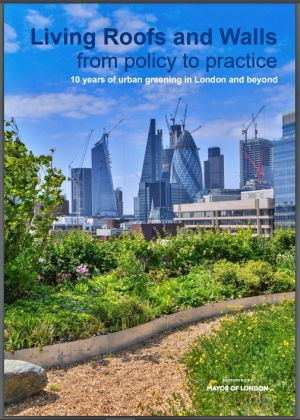Jane Dalton of Independent UK writes:
Ministers should transform the UK’s towns and cities by turning flat roofs into wildlife havens and creating “green” walls, say conservationists. Experts are urging the government to launch a raft of climate measures, including writing into national planning policy that all flat roofs in new developments be made nature-friendly or solar roofs.
Harnessing nature to protect homes from floods, droughts and heatwaves will save money, report claims
Their report also calls on ministers to support tree-planting in cities and to set targets to retrofit buildings with green roofs.
The researchers want all four governments of the UK to “unleash the power of nature” to protect homes and farmland from floods, droughts and heatwaves brought on by the climate crisis. They say harnessing nature’s power for the changes will save taxpayers’ money in the long run.
Last month more than 200 scientists for the UN issued a “code red for humanity”, warning such emergencies will become more frequent, but said catastrophe can be avoided if world leaders act quickly.
The new report, Nature-based Solutions in UK Climate Adaptation Policy, commissioned by the RSPB and WWF, points out the government needs to act much faster on expert advice about using nature to help society adapt to the effects of climate change.

The RSPB says green walls and roofs, with wildflowers and insect-friendly features such as old logs, have blossomed in London boroughs after being made part of local planning policy.
Flat green roofs with a thick layer of soil cool buildings in summer by as much as 12C, a 2019 report found, and insulate them in winter, reducing flooding risks by soaking up water and filtering air. This report was written by Gary Grant and Dusty Gedge of The Green Infrastructure Consultancy Ltd (GIC).
South-facing green walls can be up to 32C cooler than others, Spanish research has found, save 59 per cent of energy, and provide sound insulation. In seas and rivers, restoring kelp forests and seagrass meadows would help otters and seahorses and reduce the height and force of waves, preventing coastal flooding, according to the report authors.
A Department for Environment spokesperson said the Environment Bill would create further incentives for developers to include green roofs, walls, trees and other green infrastructure in their development plans, adding: “Our Environment Bill will deliver the most ambitious environmental programme of any country on Earth and drive forward action to protect nature and improve biodiversity, supported by a legally binding target to halt species decline in England by 2030.
READ MORE: Climate experts urge government to turn city roofs into wildlife havens and plant urban trees














